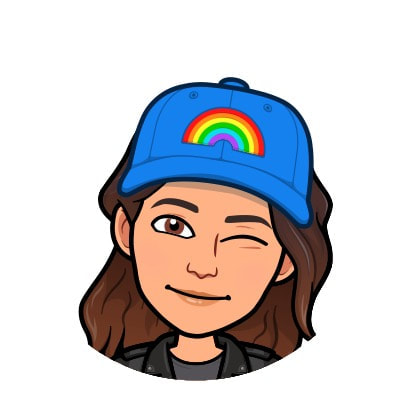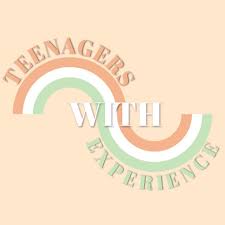|
If you are new to LGBTQ+ identities or queer theory, or you are struggling to label your own sexual or romantic orientation, this article is for you! I will go over several major LGB+ identities, beyond their dictionary definitions. Most of these terms are perceived as being black and white or having very strict definitions, but many are much looser than what people perceive, and none exclude or differentiate people based on whether or not they are transgender. If more information on any given label is desired, it is always best to look specifically to people who identify as such and are willing to talk with you about it. Many LGB+ accounts exist with admins who are more than willing to explain their identities and experiences with their sexualities and labels they use, or their posts about the same information may be enough. A note before reading - for some people, their gender is not the same as their sex. Non-binary people and identities are real. The following definitions of sexual and romantic orientations are completely trans-friendly, regardless of whether an individual person who uses any of these labels is transphobic or not. ASEXUAL: feeling no sexual attraction. Many people commonly believe that asexuality is the same as lacking a sex drive, but this is not true. Many asexual people, or “ace” people, do have sex drives, and may participate in solo, partnered, or group sexual activity. They simply do not feel sexual attraction to people. Asexuality is also commonly confused with AROMANTICISM, the lack of romantic attraction to people. Asexual people can be aromantic, or “aro,” but not all are, and same with aromantic people being asexual. Both identities are valid. A black ring on the right middle finger is often worn by aces to show their identity, and a white ring on the left middle finger by aromantics. ALLOSEXUAL/ALLOROMANTIC: a person who experiences sexual or romantic attraction. This term refers to anyone who is not ace or aro, and is commonly abbreviated as “allo.” On the ASEXUAL SPECTRUM, a concept that sexuality is experienced on a spectrum of strength, attraction, and drive, allo people would mark the opposite end of ace/aros. BISEXUAL/BIROMANTIC: feeling sexual and/or romantic attraction to two or more genders and sexes. Many people unfamiliar with LGBTQ+ identities often mistake bisexuality as meaning “male and female,” but that is simply not the case. Many bisexual people, throughout history, experience attraction to people of all genders or sexes. Bisexual does not exclude trans or non-binary people. This is also the most common non-straight orientation within the LGB+ community. DEMISEXUAL/DEMIROMANTIC: only feeling sexual or romantic attraction after forming a deep, emotional bond. These identities are often seen as being in the middle of the ace-spectrum. GAY: a term to express same sex / gender attraction. Often perceived as homosexual male, many other LGBT+ people describe themselves as gay even if they do not fit that exact description. Some use it as an umbrella term to describe all forms of same-sex/gender attraction, although that usage sparks controversy within the community, especially concerning potentially negative effects of erasing bi identities and experiences. HETEROSEXUAL/HETEROROMANTIC: Attraction to the “opposite” sex or gender. HOMOSEXUAL/HOMOROMANTIC: feeling sexual and/or romantic attraction to mainly or exclusively people of the same sex or gender. LESBIAN: a homosexual woman or person who is connected to womanhood, attracted to people who are connected to womanhood. A very common misconception is that a lesbian is strictly a cis-woman who is only attracted to other cis-women: this is both historically and practically inaccurate. Many GNC, non-binary, and trans people identify as lesbians, and lesbians often find themselves attracted to or in relationships with such people. OMNISEXUAL/OMNIROMANTIC: attraction to all genders / sexes. Many people who identify as omni describe that their attraction to a person is influenced by their gender, sex, and gender expression. Though this experience is not true for all, it is important to note as many use that experience to distinguish omni identities from other, similar identities that include attraction to more than one gender or sex. PANSEXUAL/PANROMANTIC: attraction to all genders / sexes, most commonly attraction without regard to gender or sex. This definition is not used by all people who identify as pan, and there is some overlap with other labels. Such flexibility with these definitions must be accepted. One cannot “diagnose” another person’s sexuality. POLYSEXUAL/POLYROMANTIC: attraction to many, but not all genders / sexes. QUEER: an umbrella term, of sorts, that is non-specific to sexuality or gender. Any person who is LGBTQ+ in some manner can use this label. The word, originally a slur, was reclaimed by the community in the 70s and 80s, and only recently has there been an increase in thought that using this label is homophobic in such manner. Take caution when describing others with this term, however. Some people do not want to be labelled as queer, and that wish should be respected. I hope that this short guide is able to provide some insight and help you better understand different sexual and romantic orientations, or help you understand your own. Years ago when I was questioning my own identity, I found that seeing these different labels and definitions layed out helped me get a better sense of what I experienced and what I did not, allowing me to get a better sense of what labels I most identified with. If you are questioning, feel free to try different labels to see what fits, or to not use a label at all. You are unique, and only you get to decide which label describes your experiences best.
0 Comments
Your comment will be posted after it is approved.
Leave a Reply. |
Categories
All
|
|
|
Teenagers With Experience is an online organisation created to provide teenagers worldwide with an online platform to share their own experiences to be able to help, inform and educate others on a variety of different topics. We aim to provide a safe space to all young people. You can contact us via email, social media or our contact form.
|


 RSS Feed
RSS Feed
